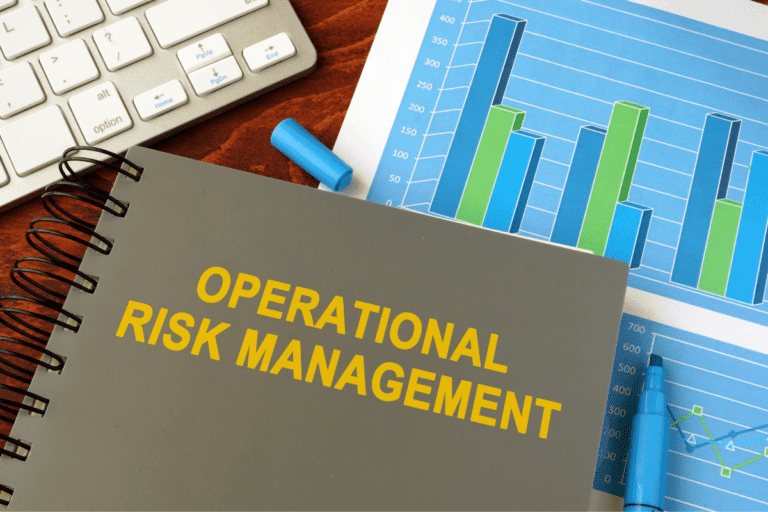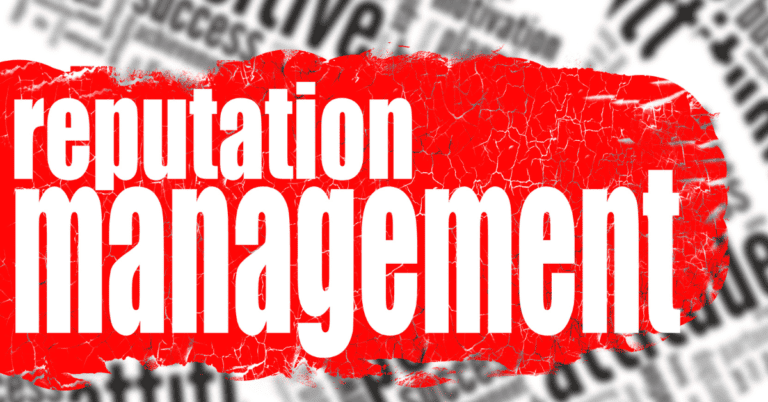What are examples of business risks?
Business risks are threats and opportunities that refer to a business’s internal risks and external risks environment and can help or prevent the company from accomplishing goals.
Understanding the benefits of risk management and anticipating risks can help resolve problems, prepare contingencies, and reach the business plan.
This article defines risk management as a proactive process that helps companies assess and manage potential risks.
Let’s Look at Risk Opportunity and Threat Definitions
Opportunities
Opportunity-based risks materialise when you’re faced with choices and select one option over the others.
The risk is that the option you didn’t choose was potentially better for your organisation, hence a missed opportunity.
For example, you’re considering opening a new business location in another country and narrowing your options to two countries. You decide to expand in the country closest to current operations, risking possible greater success if you had chosen the more remote country instead.
To overcome opportunity-based risk, it might be helpful to increase your confidence in your business decisions and strive to maximise your efficiency in whatever selection you choose.
Threats
A threat is an event or circumstance that takes advantage of another vulnerability and could negatively affect the ability to continue operations.
Understanding threats is essential to make appropriate decisions about protecting the business.
Risk Management Actions
There are four different types of risk management process actions to take when facing uncertainty:
- Avoidance
- Acceptance
- Reduction
- Transfer
Each has its benefits and drawbacks.
The best approach depends on the business situation and the risk. So, understanding these action types can help you make better decisions that work to your advantage.

Now, Let’s Look at Typical Business Risk Examples
Financial

Financial risk refers to a company’s monetary resources.
Suppose a business has limited funds resulting from a debt or economic fluctuations. In that case, the corporate financial risks can influence its operations.
For example, a shop that sells ice cream should anticipate a smaller customer footfall during the winter months, affecting how much money they can make during the off-season. By evaluating the financial risk, the shop can create a work schedule to limit the number of hires during the winter, saving the company funds they would use to pay wages.
Other business risks can also initiate financial risks.
For example, damage to a reputation can stall new customers from buying a product, limiting its monetary growth. A natural disaster causing physical damage to a company’s building assets can make business owners and managers invest in reconstruction rather than growth.
As a business stakeholder, assessing the company’s financial state and other business risks might help prepare for every possible drawback.
Other risk management process action examples:
- Avoiding debt – Actions could include credit checks, setting credit limits, setting shorter payment terms for suppliers or, in extreme instances, using a debt collection agency
- The bankruptcy of suppliers or clients – Consider checking the financial background through a business intelligence agency. Keep abreast of early warning indicators such as consistent or increasing late payments. For supply, avoid the use of single source
- Poor cashflow – Improve business cashflow management, review ongoing costs and check appropriate inventory use and replacement. Carefully use long and short-term financing
Of course, some of these can also be considered opportunities. For example, improving cash flow and reducing bad debt can positively impact any business.
Schedule

Schedule Risk is the likelihood and impact of not meeting schedules.
It can exist in any type or level of a project or operation. It is impossible to predict, with complete certainty, the duration of a task or activity, the meeting of a milestone, or the delivery of a system.
Examples include scope creep, assigning the wrong resources, and planning sequence errors.
Risk management process action examples:
- Look to minimise the number of critical paths to help in avoiding schedule risk
- Schedule path convergence is a significant risk, so modifying the work, so a respective activity has fewer predecessor dependencies
- The best way to avoid increased project risk and cost impact is to complete complex tasks as soon as possible. Even if it’s not always easy to get started
- It’s challenging to see beyond the horizon, so avoid scheduling errors by planning regular reviews of a long-duration schedule
Performance

Performance risk is the potential for a product, service, program or projects not to deliver as much value as required.
Performance risk is not the responsibility of any one party. It refers to the possibility that the output won’t yield the outcomes and advantages defined in the specifications. Even if costs are within budget and the schedule Is met, Performance risk can mean the output did not deliver.
This can also be known as quality risk, although quality should be considered part of performance risk.
Risk management process action examples:
- Ensure test and acceptance criteria requirements are agreed upon and signed off
- If Service Level Agreements are defined, ensure tests are measured against them
- Tests and system behaviour are compared, and any differences investigated
- Test results are compared to earlier releases, and the differences are investigated
Health / Safety

Hazard risks can affect the health and safety of employees and members of the public in the work environment.
The external environment can also be hazardous for the workplace since natural disasters can prevent a company’s operations.
Manufacturing companies, for example, typically assess hazard risks to ensure professionals operate heavy machinery properly and limit exposure to dangerous chemicals.
Also, employees can experience a psychological impact from a strenuous work schedule.
Businesses might perform regular safety audits and prioritise mental health in professional settings to determine hazard-based risks.
Risk management process action examples:
- Create, distribute and educate all stakeholders on the health and safety policy
- Identify risk threats and opportunities
- Evaluate the risks and carry out a risk assessment
- Provide staff training, e.g. on manual lifting, hazard awareness, etc
- Develop a procedure for reporting incidents and near misses
Environmental Impact

Environmental risks include pollution, radiation, noise, land use patterns, work environment, and climate change. These risks can be driven by sectors such as energy, industry, agriculture, transport, and land planning.
Risk management process action examples:
- Risk to employees of extreme weather. Ensure safe temperatures at work, access to water, home working in bad weather, support with travel, accommodation, etc.
- Business insurance, e.g. buildings and contents
- Invest in storm protection, fire prevention and protection, etc
- Develop an emergency prevention and recovery plan
Strategic

A lack of efficiency in a business model can pose a strategic risk management issue for companies.
Managers may need to evaluate their methods and constantly find ways to improve them.
For example, a department store has historically been the destination for purchasing high-quality clothing for affordable prices. As fashion trends change, store managers consider partnering with a luxury clothing brand to sell its products at their store. However, the difference in inventory causes a strategic risk, so the managers launch a rebranding campaign to position the store as a luxury retailer.
If the business strategy is poor or becoming less effective, the risk management process actions could include:
- Having a clear vision
- Setting clear goals and objectives
- Regularly review strategy against market conditions
Governance

The structure of rules, practices, and processes used to direct and manage a company is considered governance. Risk examples include:
- Executive compensation issues leading to reputational threats
- Environmental, Social, and Governance (ESG) inaction leads to reputation threats and possible legal action
- Misusing customer data leads to possible legal action
Risk management process action examples:
- Focus firstly on compliance
- Understand the whole picture of the business and all associated risks
- Unite the company under a complete governance package
- Empower personnel to take the correct actions
Operational

The actions of an employee can influence how a business runs, which allows operational risks to manifest.
For example, a bartender cannot attend their shift on a busy Saturday night, so the manager assigns a server to make drinks for customers instead. The server takes a lot of time to learn how to fulfil orders and remain attentive to new patrons approaching the bar. To remedy the operational risk, the manager develops a training program that teaches every employee the basics of every role, so some staff can cover other shifts if necessary.
Risk management process action examples:
Operational risk, e.g. risk to day-to-day operations
- Used recognised Operational Risk Management (ORM) process
- Assess risks for each functional area, e.g. IT, HR, finance, security
- Automate operational workflows
- Use risk-based capital
- Improve people management
- Additional training
- Invest in infrastructure
Reputation

Reputation risk emerges when a situation affects how the public perceives your brand.
Negative feedback can influence your sales, social media engagement or customer satisfaction ratings.
Public relations practitioners often assess risks to reputation before making a public statement. For example, a company wants to hire a celebrity endorser to promote a new product. Professionals review celebrities’ reputations to ensure it would be beneficial to associate them with their companies.
Unexpected situations can also cause reputation risks, such as a customer posting their negative experience with a brand on social media or a newscast discussing how a product malfunctions. To minimise damage to a company’s reputation, managers should recognise the risk impact and practice crisis communication to address their customers and stakeholders.
Risk management process action examples:
- Protect your brand against data breaches
- Be vigilant of and drive excellence in customer service
- Keep your employees happy to prevent internal reputational risk threats
- Promote company values
- Ensure the business conducts its work ethically
Compliance

For some industries, legislation enacts requirements for businesses to operate. Compliance risks happen when companies don’t meet these requirements.
For instance, two licensed cosmetologists want to open a beauty salon that offers hair, nail and facial services. To comply with law regulations, they train their staff on proper sanitation procedures and ensure their workstations are clean and safe for clients. Their efforts minimise the compliance risk, and they can run their business assuredly adhering to legal standards.
Risk management process action examples:
- Compliance with regulations, laws, etc
- Employee training and refresher courses
- Seek legal advice on contracts, new legislation and industry-specific regulations
- Create a quality assurance team
- Implement more quality and safety checks






